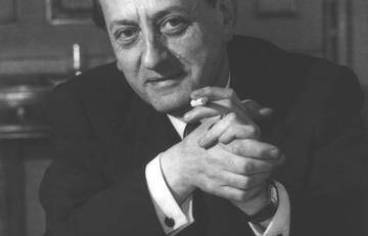The beginnings of the Ministry
Ephemeral attempts of an autonomous administration of Fine Arts from the Second Empire
- Under the Second Empire
Between 29 November 1860 and 22 June 1863: Emperor Napoleon III appoints Alexander Colonna Walewski1 (natural son of Napoleon I) Minister of State for Fine Arts; it was he who, on 21 July 1862, laid the foundation stone of the Opéra Garnier (inaugurated in 1875) and later introduced a bill on artistic and literary property.
On 15 May 1870, the government of Émile Ollivier created a Ministry of Fine Arts and then of Letters, Sciences and Fine Arts which he entrusted to Maurice Louis Richard; but this ministry did not include the Museums which remained under the tutelage of the Emperor’s House. During his administration, he extended the age limit for the Rome Prize competition to 30 years, published a regulation for the 1870 Salon that deferred to the election of the artists the choice of the jury, facilitated the operation of certain theatres, and offered to the painter Courbet and Daumier the cross of the Legion of Honor, which they refused. Maurice Richard lost his portfolio on August 9, 18702.
- Under the Third Republic
From 14 November 1881 to 30 January 1882: Gambetta appointed Antonin Proust to the new post of Secretary of State for Fine Arts (with the rank of Minister).
An artist, critic and curator, he was the first to believe that in order to have a strong ministry, the various services hitherto scattered under other tutelage had to be concentrated. This precursor was also the founder of the Musée des Monuments Français, the Ecole du Louvre and the Musée des arts décoratifs. He also created the High Council of Architecture and launched an investigation into the situation of workers and art masters. Gambetta also entrusted him with artistic teaching at school. He will share his thoughts in "art under the Republic"3.
After him, the governments will simply establish a State Secretariat for Fine Arts within the Ministry of Public Instruction. Rue de Valois will see a dozen under-secretaries of State4.
In the 1930s, the return to an autonomous arts ministry became a demand of the left parties but with the advent of the Popular Front in June 1936 it maintained the Beaux-ArtsArts under the supervision of the National Education entrusted to Jean Zay who will be appointed Minister of National Education and Fine Arts and will remain until September 19395. It is to him that the meeting of the national opera houses was created.6 and the National Museum of Folk Arts and Traditions; it also encourages the principle of mobile libraries called bibliobus. He also proposed the creation of the Cannes Film Festival, whose first edition should have been held in September 1939 if the Second World War had not begun.
After leaving power, Jean Zay outlined the project of a «ministry of cultural life» whose program will be taken up again at the Liberation in the program of the Civil and Military Organization resulting from the Resistance.
Thus, the preamble to the 1946 Constitution “records an innovation in guaranteeing cultural rights”: “The Nation guarantees equal access for children and adults to education, vocational training and culture”.
- Under the Fourth Republic
On 22 January 1947, Pierre Bourdan is appointed Minister of Youth, Arts and Letters, in charge of information services in the government of Paul Ramadier. He introduced six bills, three of which concerned the press. Thus, on February 28, 1947, the prior authorization that had previously governed the press was abolished. It is also under his mandate that the first edition of the Avignon Festival takes place7.
After this ephemeral Ministry, the Fourth Republic in turn favored the formula of the Secretary of State sheltered by the National Education. This choice, considered as an artistic resignation, was denounced in 1955 by the former assistant director of shows, Jeanne Laurent and, in 1956, by an agent of the under-secretary of State, Robert Brichet who, in an article published in the Cahiers de la République, pleads «For a Ministry of Arts».
- To go further
Philippe Poirrier, The State and Culture in France in the 20th century, The Paperback, 2000.
__________
1 - Françoise de Bernardy: «Alexandre Walewski (1810-1868), Polish son of Napoleon». Paris, Perrin, 1976.
2 - Maurice Richard, Minister of Fine Arts under the Second Empire (1832-1888), by Frédérique Hérault master’s thesis under the direction of F. Choisel, Catholic Institute of Paris, 1998, 181 p.
3 - 'The Ministry of Arts (1881-1882) or the failed institutionalization of a republican artistic policyby Vincent Dubois, Publications de la Sorbonne (Societies and Representations) 2001/1 n°11 page 229 to 261.
4 - Including Dujardin-Baumetz (1905-1912). The chief of staff of the latter, who then became director of architecture and then director of Fine Arts, told in «Du palais Royal au Palais Bourbon» the 30 years of his life rue de Valois under these undersecretaries of State.
5 - He beats, with thirty-nine consecutive months, under five governments, the absolute record in this position under the Third Republic.
6 - The numerous financial difficulties encountered by the Opéra-Comique in the 1930s prompted the State, at the instigation of Jean Zay, to place by decree of 13 August 1936 the Opéra-Comique and the Opéra under single management, called Meeting of the national opera houses (RTLN).
7 - Detailed digital directory of the Pierre Bourdan fonds at the National Archives
Partager la page


